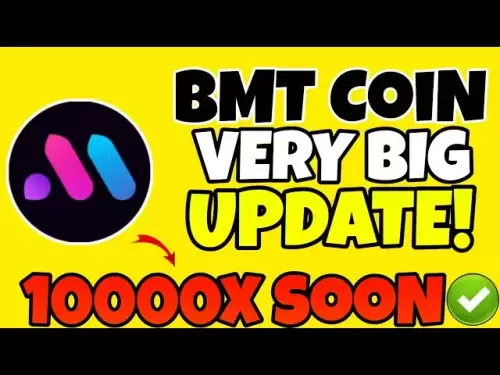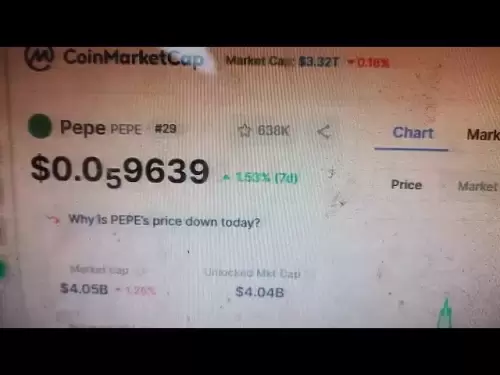-
 Bitcoin
Bitcoin $108,250.0992
0.11% -
 Ethereum
Ethereum $2,515.9404
0.03% -
 Tether USDt
Tether USDt $1.0003
0.00% -
 XRP
XRP $2.2166
-0.19% -
 BNB
BNB $656.5904
0.29% -
 Solana
Solana $147.4122
-0.58% -
 USDC
USDC $1.0000
-0.01% -
 TRON
TRON $0.2830
0.06% -
 Dogecoin
Dogecoin $0.1641
0.27% -
 Cardano
Cardano $0.5739
-0.19% -
 Hyperliquid
Hyperliquid $39.1463
-0.11% -
 Sui
Sui $2.8882
-0.02% -
 Bitcoin Cash
Bitcoin Cash $487.6428
0.31% -
 Chainlink
Chainlink $13.2097
0.07% -
 UNUS SED LEO
UNUS SED LEO $9.0308
0.10% -
 Avalanche
Avalanche $17.8608
0.13% -
 Stellar
Stellar $0.2379
-0.06% -
 Toncoin
Toncoin $2.7400
-0.39% -
 Shiba Inu
Shiba Inu $0.0...01144
-0.36% -
 Litecoin
Litecoin $87.5467
0.66% -
 Hedera
Hedera $0.1538
0.22% -
 Monero
Monero $315.5479
0.36% -
 Dai
Dai $1.0000
0.00% -
 Polkadot
Polkadot $3.3523
-0.71% -
 Ethena USDe
Ethena USDe $1.0003
0.01% -
 Bitget Token
Bitget Token $4.3960
-1.03% -
 Uniswap
Uniswap $7.2663
4.19% -
 Aave
Aave $272.8619
2.04% -
 Pepe
Pepe $0.0...09676
-0.18% -
 Pi
Pi $0.4586
-2.87%
How to conduct arbitrage transactions on Binance?
Arbitrage on Binance involves buying low and selling high across markets; swift action and understanding fees are key to profitability.
Apr 13, 2025 at 03:49 pm
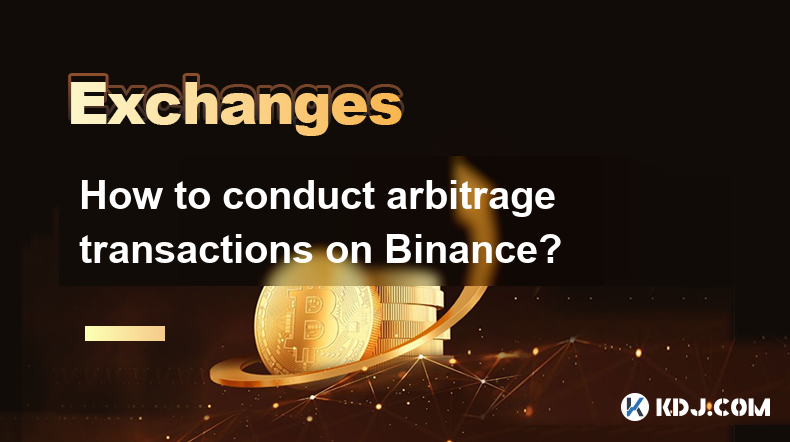
Arbitrage transactions on Binance can be a lucrative strategy for traders looking to capitalize on price discrepancies across different markets. This article will guide you through the process of conducting arbitrage transactions on Binance, ensuring you understand each step and the potential risks involved.
Understanding Arbitrage on Binance
Arbitrage is the practice of taking advantage of a price difference between two or more markets, striking a combination of matching deals that capitalize upon the imbalance. On Binance, this typically involves buying a cryptocurrency on one exchange or market where the price is lower and simultaneously selling it on another where the price is higher.
To successfully execute arbitrage on Binance, you need to have a deep understanding of the platform's trading mechanisms and the ability to act swiftly. Binance offers a variety of trading pairs and markets, which can be leveraged for arbitrage opportunities.
Identifying Arbitrage Opportunities
The first step in conducting arbitrage transactions is to identify potential opportunities. This involves monitoring the price of a specific cryptocurrency across different markets or exchanges. For instance, if Bitcoin (BTC) is trading at $30,000 on Binance's spot market but at $30,200 on another exchange, an arbitrage opportunity exists.
To find these opportunities, you can use various tools and platforms that provide real-time price data. Some traders also use automated bots to scan for price discrepancies continuously. It's crucial to factor in transaction fees and withdrawal fees, as these can significantly impact the profitability of your arbitrage trades.
Setting Up Your Binance Account
Before you can start trading, you need to set up a Binance account. Here’s how you can do it:
- Visit the Binance website and click on the "Register" button.
- Enter your email address and create a strong password.
- Complete the email verification process by clicking on the link sent to your inbox.
- Enable two-factor authentication (2FA) for added security.
- Complete the Know Your Customer (KYC) verification process to increase your withdrawal limits and access more features.
Once your account is set up, you can fund it with the necessary cryptocurrencies or fiat currencies to start trading.
Executing an Arbitrage Trade
Once you have identified an arbitrage opportunity, you need to execute the trade swiftly to capitalize on the price difference. Here’s how you can do it on Binance:
- Log into your Binance account and navigate to the trading section.
- Select the trading pair you want to trade. For example, if you are looking to arbitrage BTC, you might choose the BTC/USDT pair.
- Place a buy order on the market where the price is lower. For instance, if BTC is cheaper on Binance's spot market, you would buy BTC there.
- Simultaneously place a sell order on the market where the price is higher. If another exchange offers a higher price for BTC, you would sell your BTC there.
- Monitor the trade to ensure both orders are executed successfully. Speed is critical in arbitrage, so you might want to use Binance’s advanced order types like market orders to execute trades quickly.
Managing Risks in Arbitrage
Arbitrage, while potentially profitable, comes with its own set of risks. Price volatility can erode potential profits or even lead to losses if the market moves against you before you can complete the trade. Additionally, transaction fees and withdrawal fees can eat into your profits, so it's essential to calculate these costs before executing an arbitrage trade.
To mitigate these risks, consider the following strategies:
- Use limit orders to control the price at which your trades are executed, reducing the risk of slippage.
- Monitor market conditions closely and be prepared to cancel trades if the market moves unfavorably.
- Diversify your arbitrage strategies across different cryptocurrencies and markets to spread risk.
Withdrawing Profits
After successfully executing an arbitrage trade, you'll want to withdraw your profits. Here’s how you can do it on Binance:
- Navigate to the "Wallet" section on Binance.
- Select "Withdraw" and choose the cryptocurrency you want to withdraw.
- Enter the withdrawal address of your external wallet where you want to send the funds.
- Specify the amount you wish to withdraw.
- Review the transaction details and any associated fees.
- Confirm the withdrawal and wait for the transaction to be processed.
Frequently Asked Questions
Q: Can I use automated bots for arbitrage on Binance?
A: Yes, many traders use automated bots to scan for arbitrage opportunities and execute trades more quickly. However, it's essential to ensure that your bot complies with Binance's terms of service and trading rules.
Q: How quickly do I need to act on an arbitrage opportunity?
A: Speed is crucial in arbitrage trading. Price discrepancies can close quickly, so you need to act as soon as you identify an opportunity. Using market orders can help you execute trades faster.
Q: Are there any specific cryptocurrencies that are better for arbitrage on Binance?
A: While any cryptocurrency with sufficient liquidity can be used for arbitrage, popular and highly liquid cryptocurrencies like Bitcoin (BTC) and Ethereum (ETH) are often preferred due to their large trading volumes and tighter spreads.
Q: What are the common pitfalls to avoid in arbitrage trading on Binance?
A: Common pitfalls include failing to account for all fees, not acting quickly enough, and not monitoring market conditions closely. Additionally, relying too heavily on a single arbitrage strategy without diversifying can increase risk.
Disclaimer:info@kdj.com
The information provided is not trading advice. kdj.com does not assume any responsibility for any investments made based on the information provided in this article. Cryptocurrencies are highly volatile and it is highly recommended that you invest with caution after thorough research!
If you believe that the content used on this website infringes your copyright, please contact us immediately (info@kdj.com) and we will delete it promptly.
- Litecoin Breakout Watch: What Traders Need to Know Now
- 2025-07-06 16:50:13
- Bitcoin, Solana, Ethereum: Decoding the Latest Buzz on the Blockchain
- 2025-07-06 16:50:13
- Widnes Resident's 50p Could Be Your Ticket to Easy Street: Rare Coin Mania!
- 2025-07-06 16:55:13
- Bitcoin, Solaris Presale, and Token Rewards: What's the Buzz?
- 2025-07-06 16:55:13
- Grass Seeds, Garden Experts, and a £1 Coin Hack: Your Guide to a Perfect Lawn
- 2025-07-06 14:30:13
- Cracking the Code to a Perfect Lawn: Grass Seeds, Expert Tips, and the £1 Coin Hack!
- 2025-07-06 14:50:13
Related knowledge
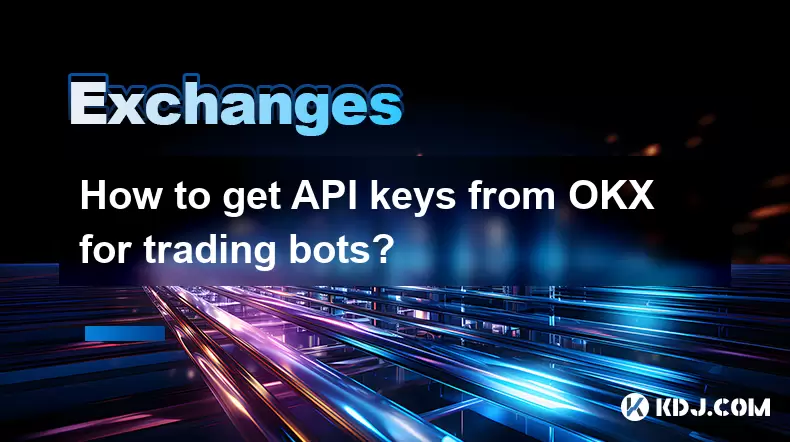
How to get API keys from OKX for trading bots?
Jul 03,2025 at 07:07am
Understanding API Keys on OKXTo interact with the OKX exchange programmatically, especially for building or running trading bots, you need to obtain an API key. An API (Application Programming Interface) key acts as a secure token that allows your bot to communicate with the exchange's servers. On OKX, these keys come with customizable permissions such ...
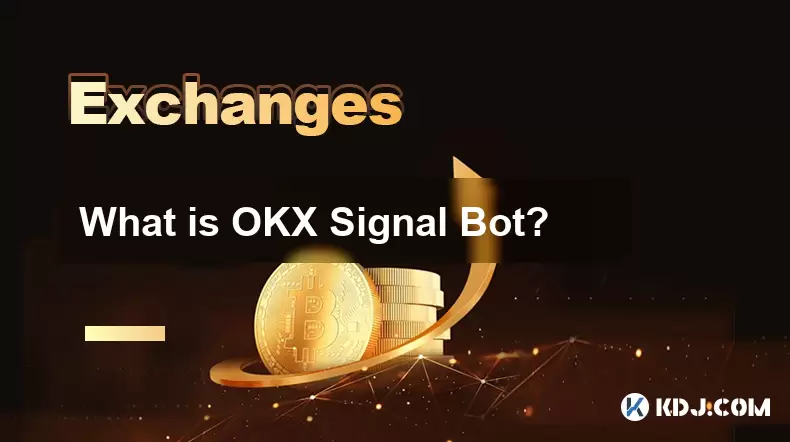
What is OKX Signal Bot?
Jul 02,2025 at 11:01pm
Understanding the Basics of OKX Signal BotThe OKX Signal Bot is a feature within the OKX ecosystem that provides users with automated trading signals and execution capabilities. Designed for both novice and experienced traders, this bot helps identify potential trading opportunities by analyzing market trends, technical indicators, and historical data. ...
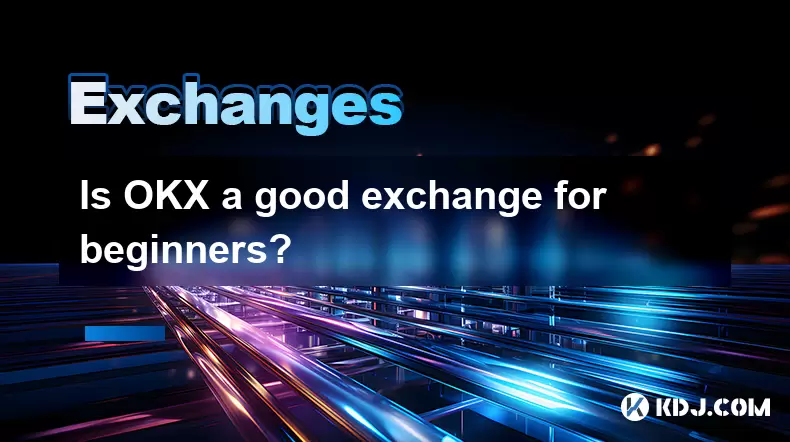
Is OKX a good exchange for beginners?
Jul 03,2025 at 05:00pm
What Is OKX and Why Is It Popular?OKX is one of the leading cryptocurrency exchanges globally, known for its robust trading infrastructure and a wide variety of digital assets available for trading. It supports over 300 cryptocurrencies, including major ones like Bitcoin (BTC), Ethereum (ETH), and Solana (SOL). The platform has gained popularity not onl...
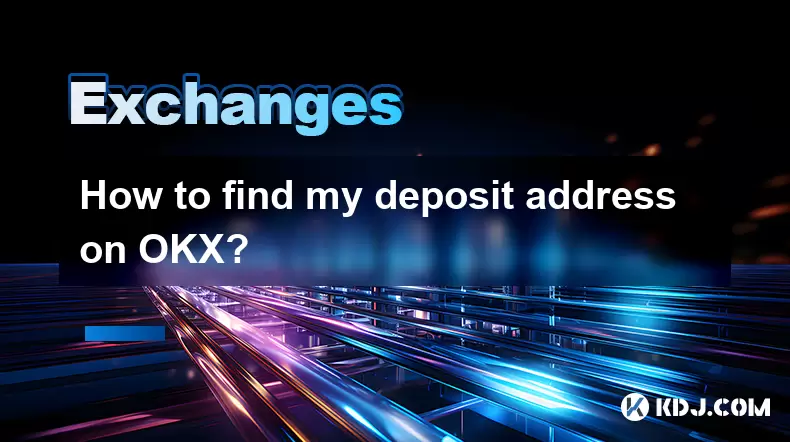
How to find my deposit address on OKX?
Jul 06,2025 at 02:28am
What is a Deposit Address on OKX?A deposit address on OKX is a unique alphanumeric identifier that allows users to receive cryptocurrencies into their OKX wallet. Each cryptocurrency has its own distinct deposit address, and using the correct one is crucial to ensure funds are received properly. If you're looking to transfer digital assets from another ...
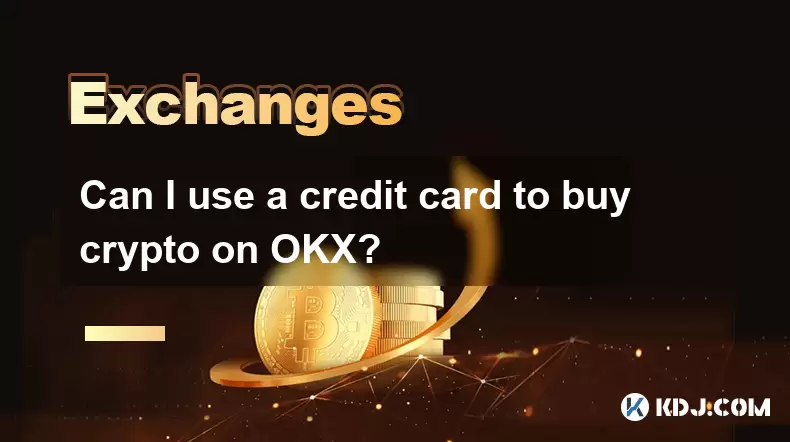
Can I use a credit card to buy crypto on OKX?
Jul 04,2025 at 04:28am
Understanding OKX and Credit Card PaymentsOKX is one of the leading cryptocurrency exchanges globally, offering a wide range of services including spot trading, derivatives, staking, and more. Users often wonder whether they can use a credit card to buy crypto on OKX, especially if they are new to the platform or looking for quick ways to enter the mark...
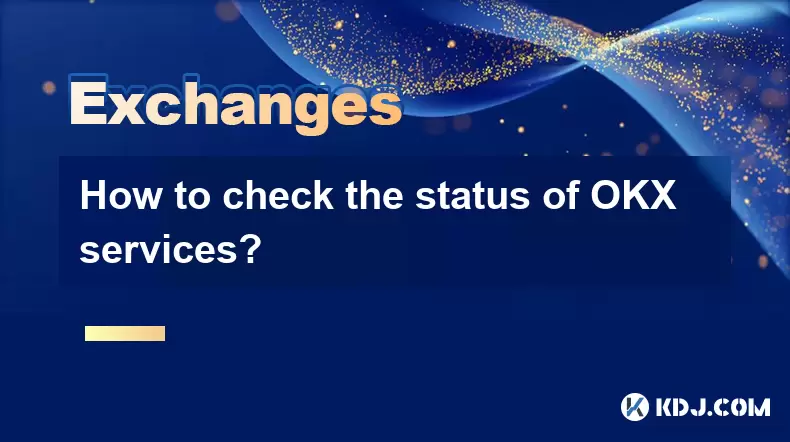
How to check the status of OKX services?
Jul 02,2025 at 11:14pm
What is OKX, and Why Checking Service Status Matters?OKX is one of the world’s leading cryptocurrency exchanges, offering services such as spot trading, futures trading, staking, and more. With millions of users relying on its platform for daily transactions, it's crucial to know how to check the status of OKX services. Downtime or maintenance can affec...

How to get API keys from OKX for trading bots?
Jul 03,2025 at 07:07am
Understanding API Keys on OKXTo interact with the OKX exchange programmatically, especially for building or running trading bots, you need to obtain an API key. An API (Application Programming Interface) key acts as a secure token that allows your bot to communicate with the exchange's servers. On OKX, these keys come with customizable permissions such ...

What is OKX Signal Bot?
Jul 02,2025 at 11:01pm
Understanding the Basics of OKX Signal BotThe OKX Signal Bot is a feature within the OKX ecosystem that provides users with automated trading signals and execution capabilities. Designed for both novice and experienced traders, this bot helps identify potential trading opportunities by analyzing market trends, technical indicators, and historical data. ...

Is OKX a good exchange for beginners?
Jul 03,2025 at 05:00pm
What Is OKX and Why Is It Popular?OKX is one of the leading cryptocurrency exchanges globally, known for its robust trading infrastructure and a wide variety of digital assets available for trading. It supports over 300 cryptocurrencies, including major ones like Bitcoin (BTC), Ethereum (ETH), and Solana (SOL). The platform has gained popularity not onl...

How to find my deposit address on OKX?
Jul 06,2025 at 02:28am
What is a Deposit Address on OKX?A deposit address on OKX is a unique alphanumeric identifier that allows users to receive cryptocurrencies into their OKX wallet. Each cryptocurrency has its own distinct deposit address, and using the correct one is crucial to ensure funds are received properly. If you're looking to transfer digital assets from another ...

Can I use a credit card to buy crypto on OKX?
Jul 04,2025 at 04:28am
Understanding OKX and Credit Card PaymentsOKX is one of the leading cryptocurrency exchanges globally, offering a wide range of services including spot trading, derivatives, staking, and more. Users often wonder whether they can use a credit card to buy crypto on OKX, especially if they are new to the platform or looking for quick ways to enter the mark...

How to check the status of OKX services?
Jul 02,2025 at 11:14pm
What is OKX, and Why Checking Service Status Matters?OKX is one of the world’s leading cryptocurrency exchanges, offering services such as spot trading, futures trading, staking, and more. With millions of users relying on its platform for daily transactions, it's crucial to know how to check the status of OKX services. Downtime or maintenance can affec...
See all articles





















